I’ve said before how much I prefer the very dark Farmington Canyon Complex rocks on Antelope Island as perches, over the bright white Tintic Quartzite rocks found on the northern part of the island. This juvenile Red-tailed Hawk made my morning last month when it chose just such a rock to hunt from.
I always enjoy it when I can get multiple shots of some interesting behavior or action in sequence. To me it’s almost like a very slow motion video and though it may include a few images that aren’t perfect individually I think that collectively the photos gain value as a group for what they illustrate – the whole can be greater than its parts.
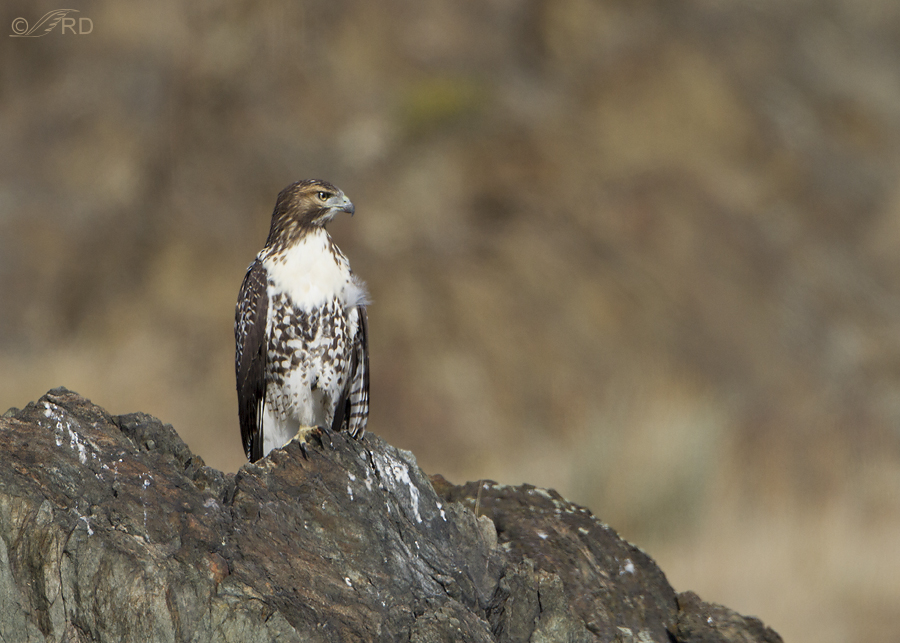
1/2500, f/7.1, ISO 400, 500 f/4, 1.4 tc, shot from pickup window, natural light, not baited, set up or called in
Photographing take-offs is always a challenge. The bird may just sit there for a half hour or longer but when it happens it’s quick and easy to miss.
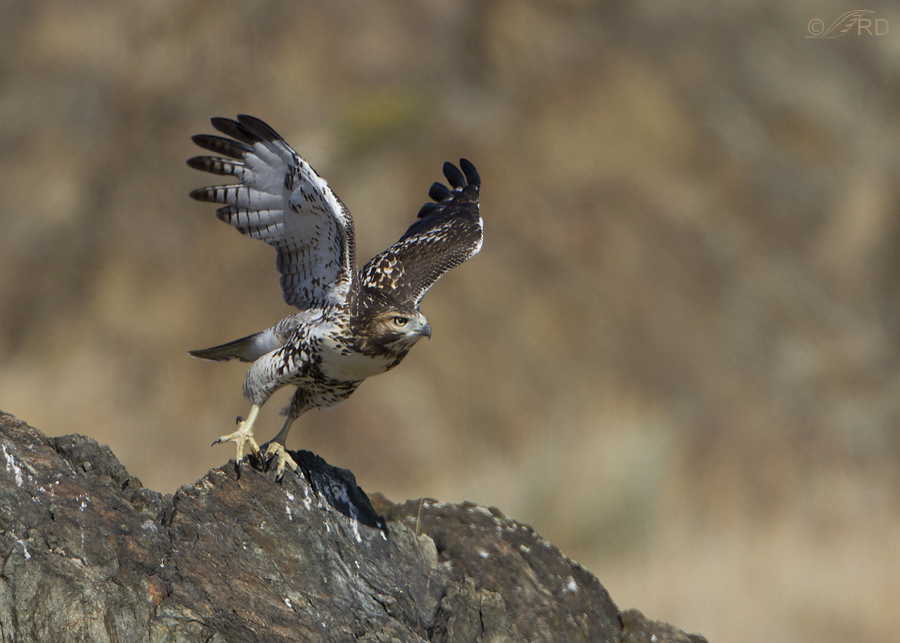
1/2500, f/7.1, ISO 400, 500 f/4, 1.4 tc, shot from pickup window, natural light, not baited, set up or called in
You also need to be concerned about what direction it will go and if you’re too close (it’s easy to clip wings if you are) or too far away (which shows less detail). Those with zoom lenses have an advantage over me because they can quickly adjust their focal length to whatever they want within their zoom range, while the only option I have is to attach or detach my teleconverter, which is cumbersome and takes time. Don’t get me wrong though, I’m extremely happy with my 500mm prime lens and if I had that purchase to do over again I’d make the same decision.
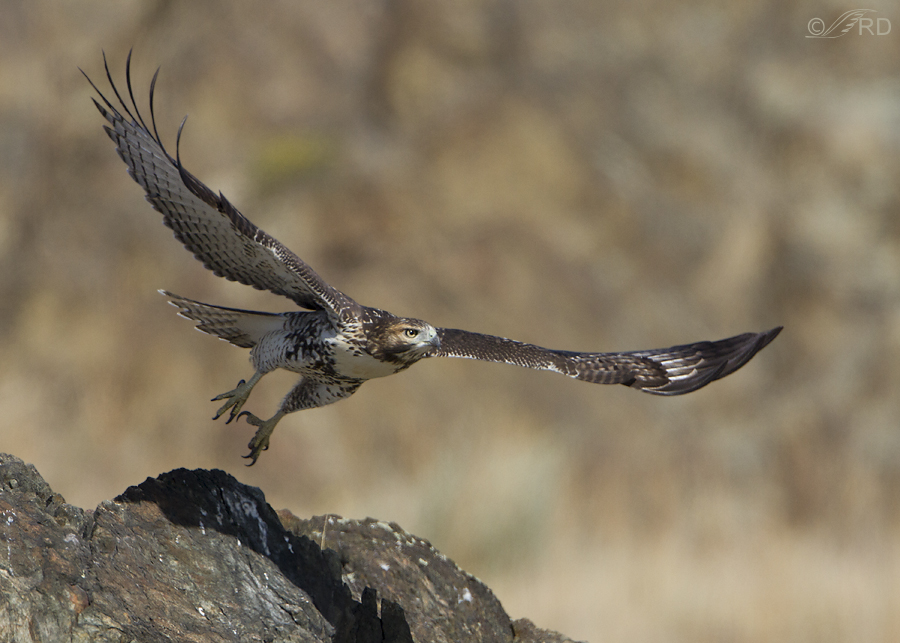
1/2500, f/7.1, ISO 400, 500 f/4, 1.4 tc, shot from pickup window, natural light, not baited, set up or called in
Normally, a horizontal wing position isn’t my favorite but from this angle I think it can be quite effective. But with the large wingspan of buteos you really have to be careful not to cut off a wing and to leave enough room in the frame in front of the bird for a pleasing composition – not easy to do when things are happening this fast.
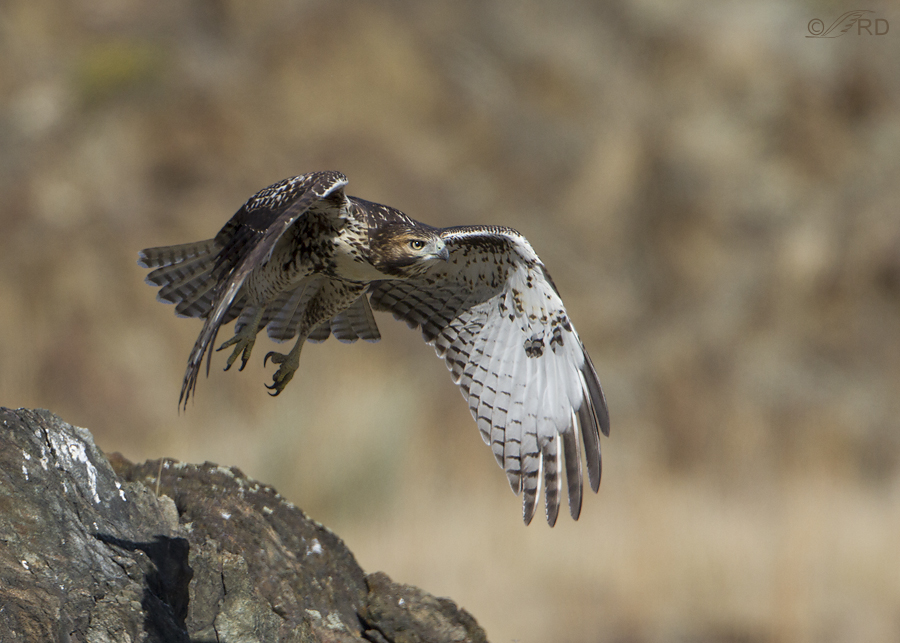
1/2500, f/7.1, ISO 400, 500 f/4, 1.4 tc, shot from pickup window, natural light, not baited, set up or called in
Another difficulty is maintaining focus lock on the bird after it has left the perch. Here I was aided by the fact that the background wasn’t very close to the hawk so my camera didn’t try to “grab” anything back there and I was able to stay locked on the bird for multiple shots. In a situation like this I like to use A1 Servo and Autofocus Point Expansion on my Canon 7D, which gives me 5 focus points in the center of the frame. If the background were closer I’d only use a single focus point and hope for the best.
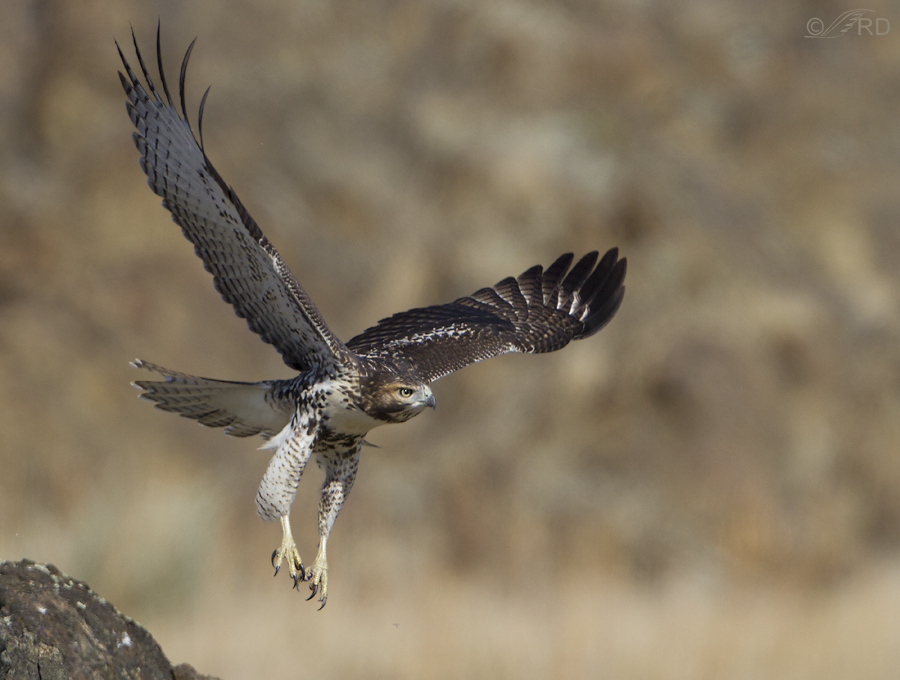
1/2500, f/7.1, ISO 400, 500 f/4, 1.4 tc, shot from pickup window, natural light, not baited, set up or called in
I liked this intermediate wing position from this angle, especially when combined with the dangling feet.
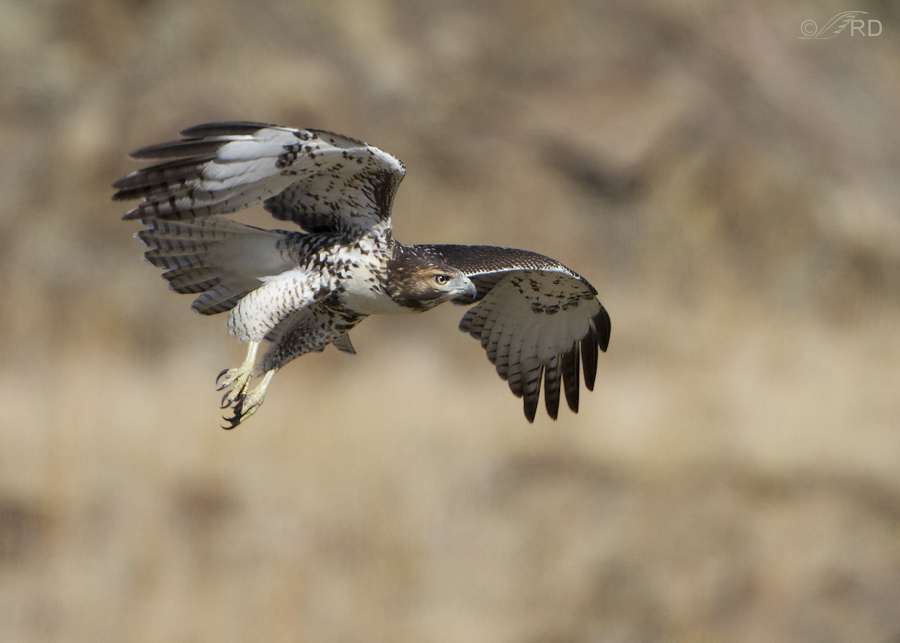
1/2500, f/7.1, ISO 400, 500 f/4, 1.4 tc, shot from pickup window, natural light, not baited, set up or called in
You’ll notice from the image file numbers (they show up with your cursor on the image) that the last five frames are sequential, with no skips.
.
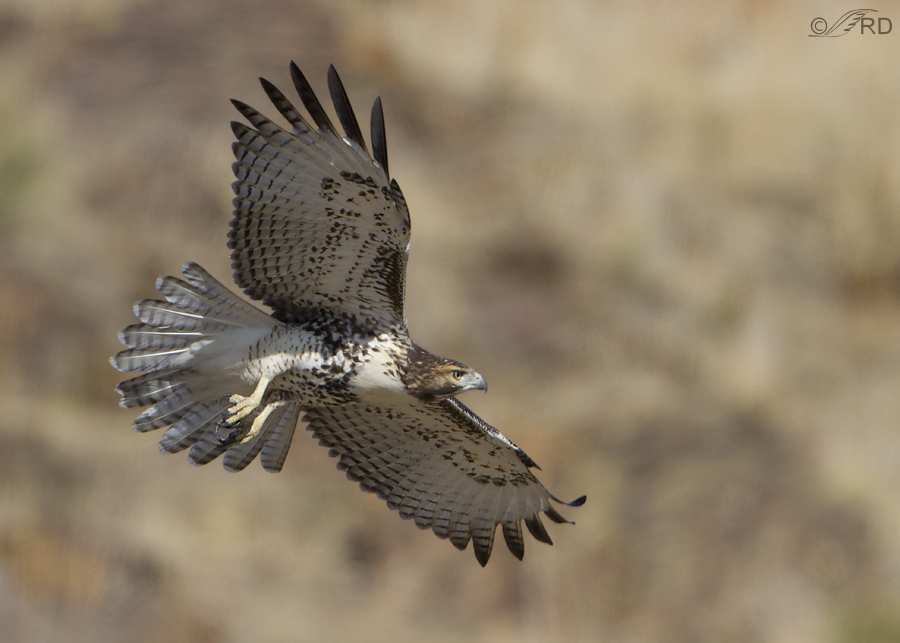
1/2500, f/7.1, ISO 400, 500 f/4, 1.4 tc, shot from pickup window, natural light, not baited, set up or called in
However, this one is four frames after the previous image and by now the hawk is turning away from me. If the bird had been in level flight I’d have trashed the shot because of the horizontal wing position but here the bird is banking away, which gave me a good look at the underside of the bird.
Ron


Really really wonderful images and your images absolutely inspire me for bird photography..if you do not mind could I know the gear you are using.
Thank you Senglim.
Canon 7D, Canon 500mm f/4, often a 1.4 teleconverter, usually my shots are taken from my vehicle without tripod use.
Such a wonderful series. Thank you. Again.
Thanks, Elephant’s Child.
These are gret photos of one of my favorite birds. So clear and detailed! Thanks
Thank you, Teri.